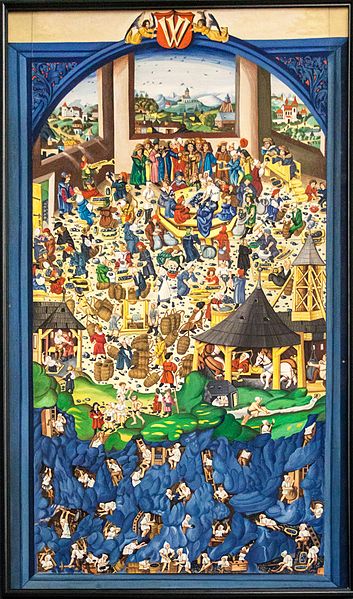Kingdom of Hungary (1301–1526)
In the Late Middle Ages, the Kingdom of Hungary, a country in Central Europe, experienced a period of interregnum in the early 14th century. Royal power was restored under Charles I (1308–1342), a scion of the Capetian House of Anjou. Gold and silver mines opened in his reign produced about one third of the world's total production up until the 1490s. The kingdom reached the peak of its power under Louis the Great (1342–1382) who led military campaigns against Lithuania, southern Italy and other faraway territories.
Kingdom of Hungary in the 14th century
The oldest authentic representation of the Holy Crown of Hungary from 1555
The castle at Kremnitz (Hungarian: Körmöcbánya, Slovak: Kremnica), a mining town founded by German miners from Bohemia
Charles I's golden forint
The late Middle Ages or late medieval period was the period of European history lasting from AD 1300 to 1500. The late Middle Ages followed the High Middle Ages and preceded the onset of the early modern period.
Europe and the Mediterranean region, c. 1354.
From the Apocalypse in a Biblia Pauperum illuminated at Erfurt around the time of the Great Famine. Death sits astride a lion whose long tail ends in a ball of flame (Hell). Famine points to her hungry mouth.
The Battle of Agincourt, 15th-century miniature, Enguerrand de Monstrelet
Silver mining and processing in Kutná Hora, Bohemia, 15th century







